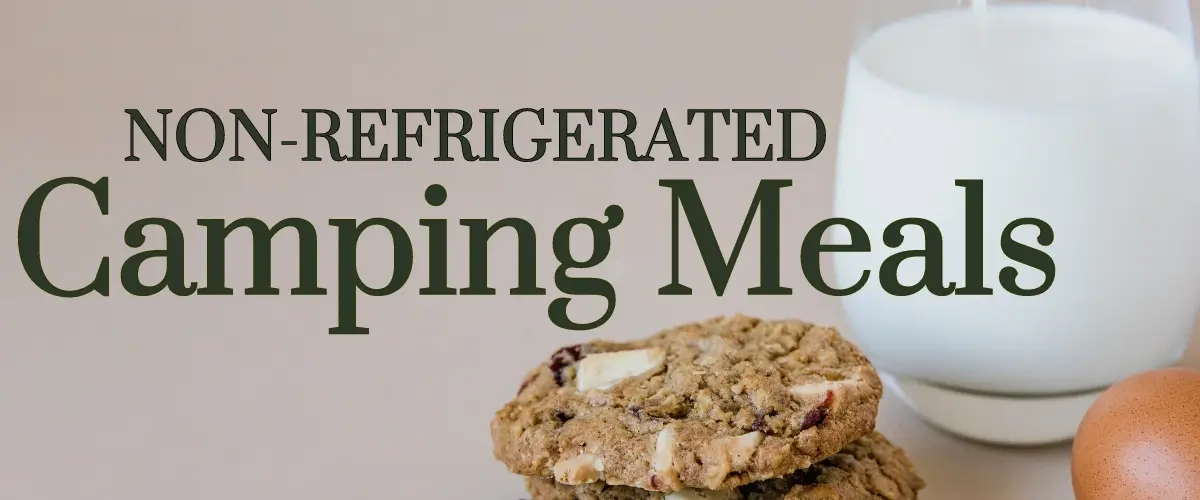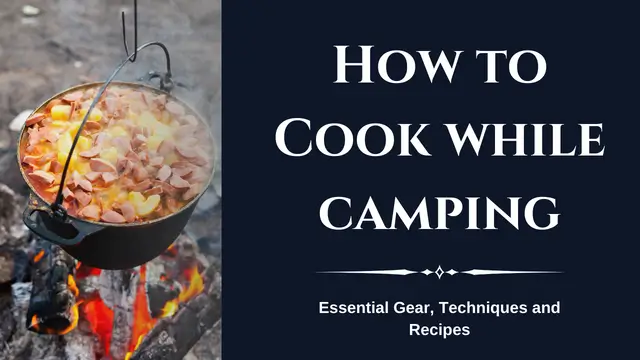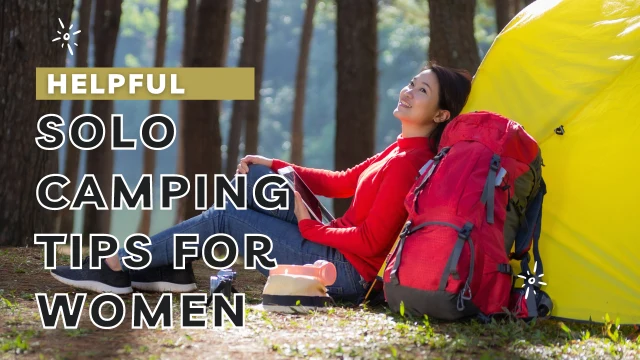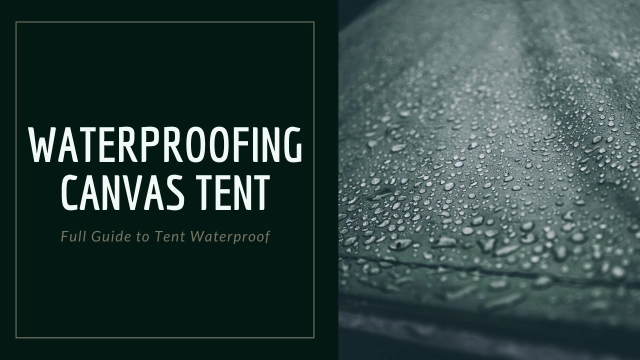The Best Wood for a Campfire: A Comprehensive Guide
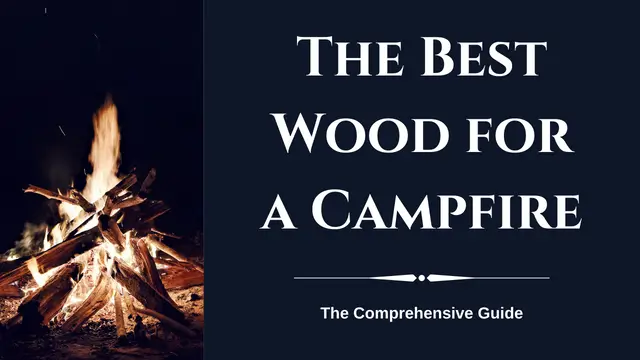
Forget the days of sputtering flames and choking smoke. Choosing the best wood for a campfire isn’t just about aesthetics; it’s the secret to a safe, enjoyable, and truly memorable experience.
Why Wood Matters?
- Fire Quality: Damp wood means smoke, creosote buildup, and even chimney fires. Let’s skip the drama and fuel a clean, low-smoke fire with the right choice.
- Safety First: The wrong wood can lead to frustratingly slow starts, irritating smoke, dangerous sparks, and even harmful chemicals released into the air. Let’s keep everyone safe and happy!
- Burn Profile: It’s all about science! Different woods burn differently based on density and moisture. Hardwoods burn long and clean, while softwoods offer quick bursts, but require more TLC.
- Slow-Burn Champions: Hickory, oak, black locust, beech, and ash – these slow-burning hardwoods are your campfire besties, promising a consistent, long-lasting glow.
- Cooking with Fire: Not just for warmth, the right wood can elevate your campfire cuisine. Maple, for example, adds a subtle smoky touch that takes your grilled goodies to the next level.
Ready to ditch the smoke and embrace the magic of a perfect campfire? I’m Jaden, your guide to campfire wood wisdom. Whether you’re a seasoned pro or a first-time fire starter, this guide will equip you with the knowledge to choose the perfect fuel for your outdoor adventures.
So, grab your marshmallows, gather around, and let’s learn how to master the art of the campfire!
The best kind of wood for a campfire are: Oak, hickory, ash, pine, and cedar.
Is softwood or hardwood better for campfire?
Hardwood is better for campfires because it burns longer and produces more heat. This is important for campfires because you don’t want to be constantly adding wood to the fire, and you want to be able to stay warm on chilly nights.
Softwood is good for starting campfires because it ignites quickly, but it burns out quickly too. This can be frustrating if you’re trying to keep a campfire going for a long time.
So, If you’re looking for a quick and easy fire, softwood is a good option. But if you want a fire that will last longer and produce more heat, hardwood is the better choice.
Read also: How Hot Is A Campfire?
The Top Picks: Best Wood for a Campfire
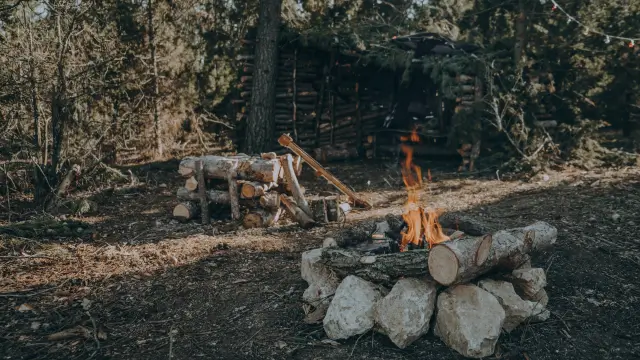
Now that we’ve explored the fundamentals of hardwoods and softwoods, let’s delve into some specific types of wood that stand out as exceptional choices for your campfire.
1. Oak
Oak is often hailed as the king of campfire woods, and for good reason. With a reputation for being one of the best choices, oak boasts the following characteristics:
- Substantial Heat: When dry, oak produces a remarkable amount of heat, ensuring you stay warm even on the chilliest nights.
- Slow and Steady Burn: Oak logs burn slow and steady, providing a sustained campfire experience that’s perfect for extended evenings under the stars.
- Readily Available: Found throughout much of the country, oak is readily accessible, making it a convenient choice for campers nationwide.
- Abundance in North and Central America: According to Wikipedia, Northern and central America are home to the largest number of oak species, further emphasizing its availability.
2. Hickory
Hickory is the best wood for campfire cooking, especially for those who appreciate a hotter burn. Here are the notable attributes of hickory:
- Considered the Best: Widely considered one of the best woods for burning, hickory doesn’t disappoint when it comes to heating up your campsite.
- Intense Heat Output: Surpassing oak, maple, and other popular hardwoods, hickory burns even hotter, making it ideal for colder nights.
- Dense Hardwood: While it may be tough to split, the density of hickory contributes to its excellent burning properties.
- Popular for Cooking: Beyond its campfire prowess, hickory is highly popular for cooking, adding a distinct flavor to your outdoor culinary adventures.
3. Ash
Ash, belonging to the Fraxinus genus, is a versatile and globally recognized firewood. Here’s why ash wood is a top pick:
- Variety of Species: With around 50 different species, some evergreen and others deciduous, ash provides options suited to various preferences.
- Excellent Burning Qualities: Known as some of the best firewood globally, ash burns easily, retains minimal moisture, and produces little smoke.
- Ideal for Campfires: Whether seasoned or green, ash wood is ideal for campfires, ensuring a reliable and enjoyable burning experience.
4. Pine
Pine’s appeal as campfire wood is a double-edged sword. It’s true, it’s often cheap and plentiful, and the crackle and snap as it burns can add a lovely ambiance to your gathering.
But don’t be fooled by its cheerful demeanor. Pine burns hot and fast, making it a poor choice for long-lasting fires. Think of it as a charismatic party guest who leaves early – great for getting the mood going, but not for sustained warmth.
Experts are right – pine shines as kindling. Its resin-rich sap ignites like a tinderbox, making it perfect for getting other, slower-burning woods like oak or hickory roaring. And while the piney smell can be pleasant in small doses, a whole night of it can get overpowering, even headache-inducing.
So, if you want a quick, crackling fire to set the scene for a short gathering, pine is your friend. But for sustained warmth and cozy conversation, invest in some harder woods that will burn longer and leave you with a smile, not a smoky headache. Remember, pine is the lively opening act, not the headliner.
5. Cedar
Cedar brings a unique set of characteristics to the campfire scene, making it a distinctive choice for certain situations:
- Excellent Heat: While cedar might not produce a large flame, it compensates with excellent heat, making it suitable for staying warm on chilly nights.
- Pleasing Aroma: Cedar is renowned for its unique and pleasing aroma, adding a sensory element to your campfire experience.
- Versatile Use: Beyond campfires, cedar’s subtle yet distinct aroma has led to its use in furniture polish and various consumer products.
Worst Wood for Campfire: Poplar, Spruce, Willow, and Alder
While the allure of a crackling campfire is undeniable, not all woods contribute to the ideal outdoor experience.
Understanding which woods to avoid is crucial for ensuring a safe and enjoyable camping adventure.
Among the varieties best left out of your campfire mix are Poplar, Spruce, Willow, and Alder. Here’s why:
1. Poplar
Poplar may be abundant, but it’s not the best choice for a lasting campfire. It has a tendency to burn quickly, diminishing the longevity of your outdoor fire.
If you’re aiming for a cozy and sustained flame, opting for a hardwood like oak or hickory would be a wiser choice.
2. Spruce
While Spruce wood is readily available, it comes with a significant downside – excessive smoke.
Burning Spruce tends to produce a high volume of smoke, which can be irritating to your eyes and lungs.
For a clearer and more comfortable campfire experience, it’s advisable to steer clear of Spruce.
3. Willow
Willow, often found near water sources, might seem like a convenient choice, but its high moisture content makes it a poor option for campfires.
Wet or green wood can lead to a sizzling, smoky, and inefficient burn. To avoid frustration and ensure a consistent flame, opt for drier hardwoods.
4. Alder
While Alder burns, it tends to provide a milder heat compared to hardwoods like oak or hickory.
If your goal is to stay warm and cozy during chilly nights, choosing a wood with a higher heat output is advisable.
Alder might not deliver the desired warmth for a truly enjoyable camping experience.
Gathering Your Firewood: Tips for Success
Now that you know the best and the worst types of wood for your campfire, let’s talk about gathering and preparing your firewood for a successful camping experience.
- Choose hardwood logs that are about 6 inches in diameter and 12 inches long.
- Split the logs into smaller pieces so that they will burn more evenly.
- Build your campfire in a pyramid shape with the kindling at the bottom and the larger logs on top.
- Light the kindling and let the fire burn down to a bed of coals before adding more wood.
- Keep an eye on the fire and add more wood as needed to maintain a steady burn.
Fire Safety: Building and Maintaining Your Campfire
Before we wrap up, let’s touch on fire safety. It’s crucial to build and maintain your campfire responsibly.
- Clear Space: Choose a clear, open area away from overhanging branches, dry grass, or flammable materials.
- Supervision: Never leave your campfire unattended, and ensure it’s fully extinguished before leaving.
- Water Source: Keep a water source nearby to quickly douse the fire if needed.
- Follow Local Rules: Adhere to any specific fire regulations or firewood permits in your camping area.
There you have it – With these tips in mind, you’ll be able to choose the best wood for your campfire and build the perfect campfire every time.
Stay warm, stay safe, and happy camping! Jaden Burley
Related Topics:
